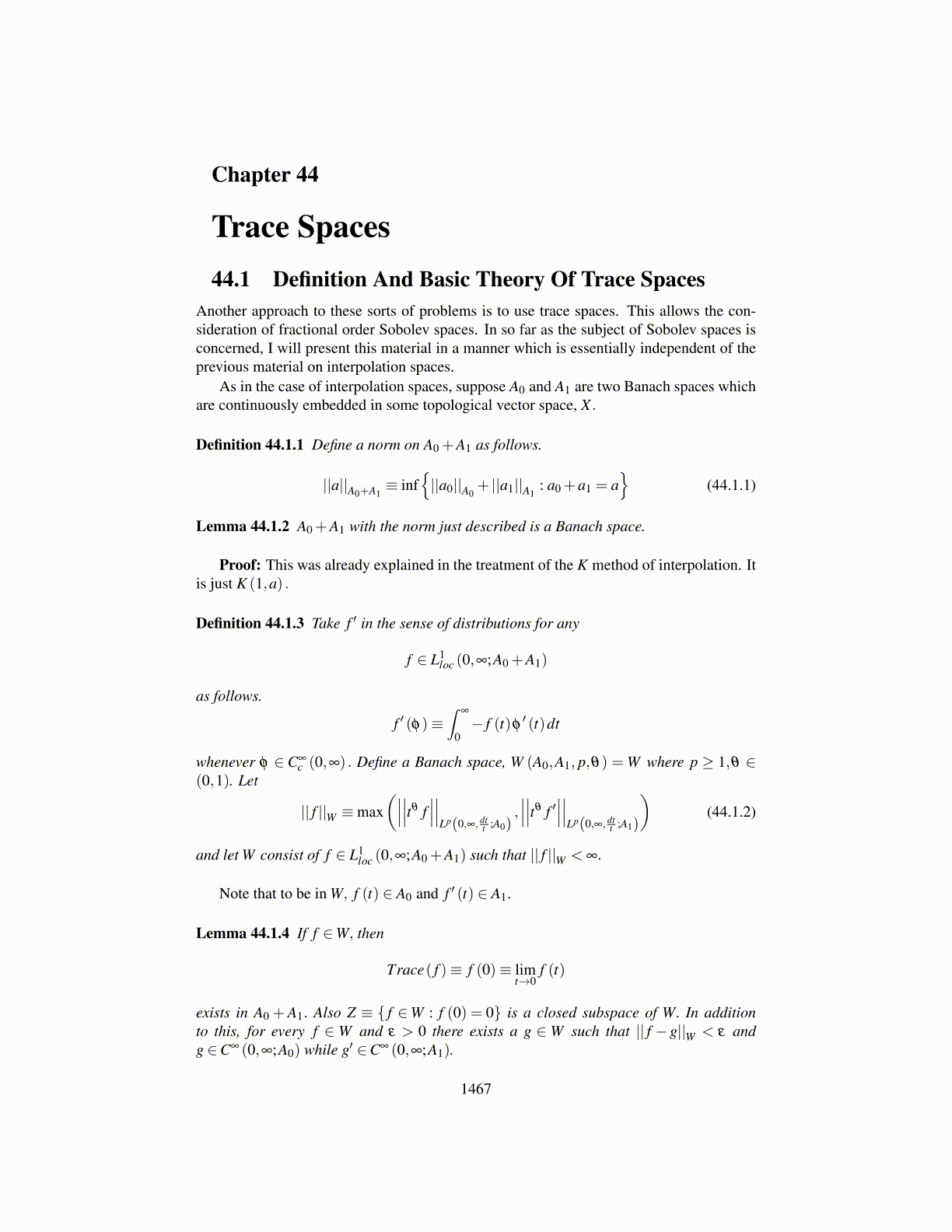
43.8. DUALITY AND INTERPOLATION 1467
Since ε is arbitrary, it follows that whenever, α ∈ λθ ,q,α i ≥ 0,
∑i
2−iK(2i,a′,A′1,A
′0)
α i ≤∣∣∣∣a′∣∣∣∣
(A0,A1)′θ ,q,J
Cθ ||α||λ θ ,q .
By Lemma 43.8.3,{
K(2i,a′,A′1,A
′0)}∈ λ
1−θ ,q′ and∣∣∣∣{K(2i,a′,A′1,A
′0)}∣∣∣∣
λ1−θ ,q′ ≤
∣∣∣∣a′∣∣∣∣(A0,A1)
′θ ,q,J
Cθ .
Therefore, (1
ln2
∫∞
0
(K(t,a′,A′1,A
′0)
t−(1−θ))q′ dt
t
)1/q′
=
(∑
i
1ln2
∫ 2i+1
2i
(K(t,a′,A′1,A
′0)
t−(1−θ))q′ dt
t
)1/q′
≤
(∑
i
(2−i(1−θ)K
(2i,a′,A′1,A
′0))q′
)1/q′
≤∣∣∣∣a′∣∣∣∣
(A0,A1)′θ ,q,J
Cθ .
Thus ∣∣∣∣a′∣∣∣∣(A′1,A′0)1−θ ,q′
≡∣∣∣∣∣∣t−(1−θ)K
(t,a′,A′1,A
′0)∣∣∣∣∣∣
Lq′(0,∞, dtt )≤C
∣∣∣∣a′∣∣∣∣(A0,A1)
′θ ,q,J
which shows that (A0,A1)′θ ,q,J ⊆ (A′1,A
′0)1−θ ,q′ with the inclusion map continuous. This
proves the lemma.
Lemma 43.8.5 If Ai is reflexive for i = 0,1 and if A0∩A1 is dense in Ai, then(A′1,A
′0)
1−θ ,q′,J ⊆ (A0,A1)′θ ,q
and the inclusion map is continuous.
Proof: Let a′ ∈ (A′1,A′0)1−θ ,q′,J . Thus, there exists u∗ bounded on compact subsets of
(0,∞) and measurable with values in A0∩A1 and
a′ =∫
∞
0u∗ (t)
dtt, (43.8.66)
∫∞
0
(t−(1−θ)J (t,u∗ (t))
)q′ dtt< ∞.
Then
a′ =∞
∑i=−∞
∫ 2i+1
2iu∗ (t)
dtt≡
∞
∑i=−∞
a′i